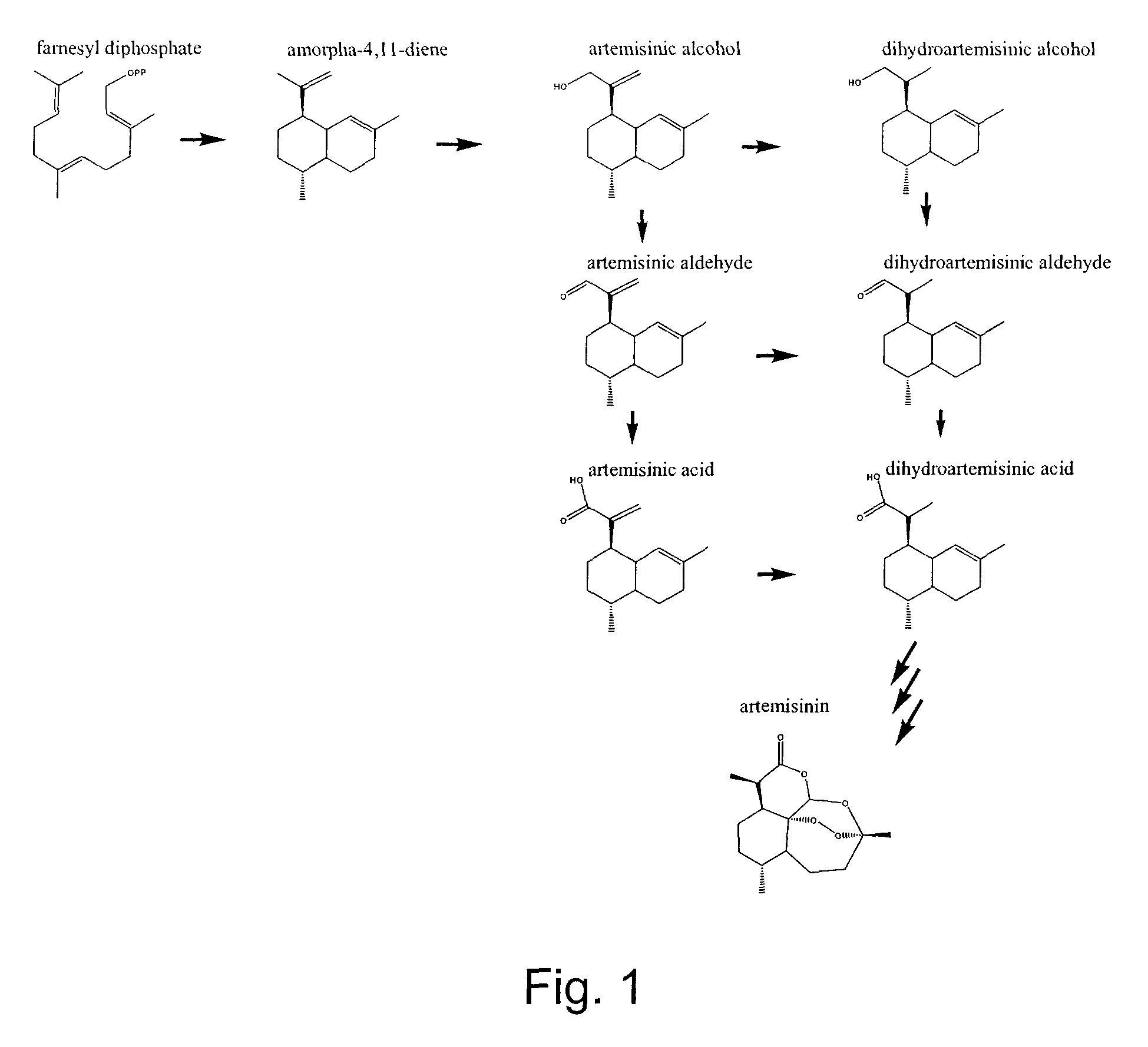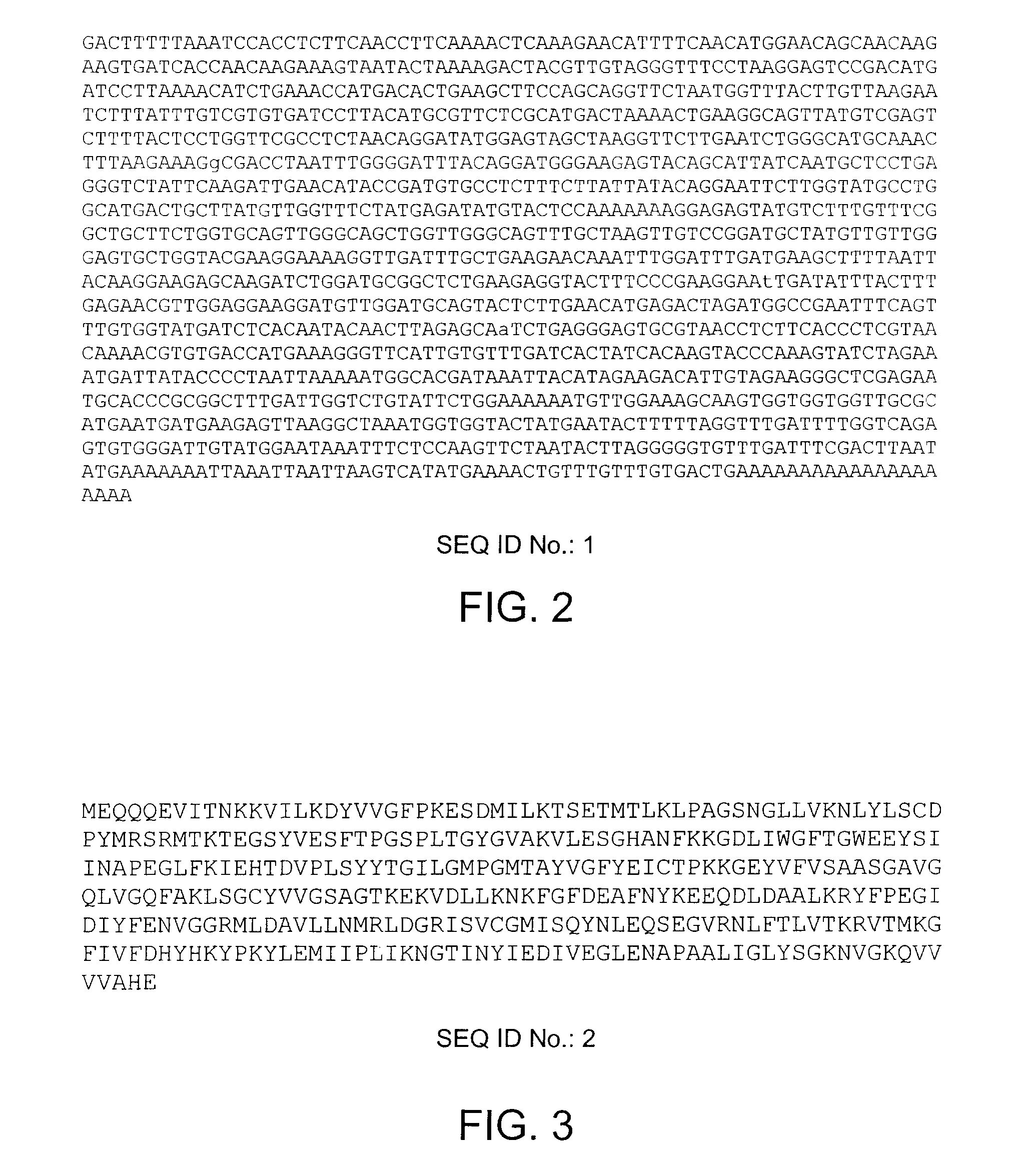Nucleotide sequences encoding enzymes in biosynthesis of dihydroartemisinic acid
a technology of dihydroartemisinic acid and nucleotide sequences, which is applied in the field of plant-derived compound production, can solve the problems of limited or variable supply of relevant plant material for these drugs, affecting the production efficiency of these drugs, and affecting the quality of the produ
- Summary
- Abstract
- Description
- Claims
- Application Information
AI Technical Summary
Benefits of technology
Problems solved by technology
Method used
Image
Examples
Embodiment Construction
[0046]Materials and Methods:
[0047]Artemisinic Aldehyde
[0048]Artemisinic acid was isolated from dichloromethane extracts of A. annua flower buds and leaves and was used to synthesize artemisinic aldehyde according to the method described by Chang et al. 2000, the disclosure of which is incorporated herein by reference.
[0049]Dihydroartemisinic Acid
[0050]Dihydroartemisinic acid was isolated and purified from A. annua leaf material obtained from a “line 2 / 39” containing relatively high levels of the dihydroartemisinic acid using the method described for artemisinic acid in Teoh et al. 2006, the disclosure of which is incorporated herein by reference.
[0051]Dihydroartemisinic Aldehyde
[0052]Dihydroartemisinic aldehyde was synthesized from the isolated dihydroartemisinic acid. The acid was converted to methyl dihydroartemisinate with excess diazomethane in diethyl ether at 0° C. for 5 minutes. The ether and diazomethane were removed under a stream of nitrogen and the methyl ester was reduce...
PUM
| Property | Measurement | Unit |
|---|---|---|
| retention time | aaaaa | aaaaa |
| retention time | aaaaa | aaaaa |
| retention time | aaaaa | aaaaa |
Abstract
Description
Claims
Application Information
 Login to View More
Login to View More - R&D
- Intellectual Property
- Life Sciences
- Materials
- Tech Scout
- Unparalleled Data Quality
- Higher Quality Content
- 60% Fewer Hallucinations
Browse by: Latest US Patents, China's latest patents, Technical Efficacy Thesaurus, Application Domain, Technology Topic, Popular Technical Reports.
© 2025 PatSnap. All rights reserved.Legal|Privacy policy|Modern Slavery Act Transparency Statement|Sitemap|About US| Contact US: help@patsnap.com



